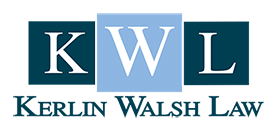
Discussing asset protection planning with clients
A common misconception is that asset protection planning is only for high-net-worth individuals or people who work in professions susceptible to malpractice claims, such as doctors or lawyers. That is not the case. In today’s litigious society, anyone can be sued, making any amount of unprotected wealth low-hanging fruit.
Many clients are likely unaware that their hard-earned assets are at risk, but with the right information and planning, they can better protect their money and property from creditors, predators, and lawsuits. This letter outlines some asset protection strategies you can discuss with your clients to help them understand their options and develop an appropriate plan.
Clients Should Take Advantage of Basic Asset Protection Strategies
Your clients should already be taking advantage of the first line of defense against liability: insurance. This should include, where appropriate, homeowner’s or renter’s, personal property, automobile, business, professional, malpractice, long-term care, and umbrella policies. Basic coverage will not do. Clients should review their policies annually to ensure that their limits and coverage are in line with their current net worth and adjust their policies as their financial situation changes.
Clients who are working should maximize contributions to their 401(k)s, since federal law protects these assets in bankruptcy. Assets held in individual retirement accounts (IRAs) are also protected under federal bankruptcy law subject to certain limits. If clients are married, then real estate and personal property held as tenants by the entirety, if recognized under applicable state law, may enjoy some additional creditor protections in certain circumstances. Finally, annuities and the cash value of life insurance may also be protected under applicable state law and federal bankruptcy law.
Many clients have these types of assets and are probably unaware of their asset protection advantages. Discussing basic strategies with them will give you the opportunity to learn about the assets they have, identify their low-hanging fruit, and help them understand how to protect it.
Digging Deeper into Advanced Asset Protection Strategies
For your clients who need to go beyond basic asset protection planning, advanced planning often involves layering multiple techniques. This is where domestic limited liability business entities (such as limited liability partnerships or limited liability companies) or irrevocable trusts come into play. Since domestic asset protection trusts (DAPTs) are now recognized in 17 US states, they should be included in the irrevocable trust conversation.
Final Considerations
Our litigious society has made asset protection planning a must for people of any means. When reviewing your book of business to identify clients who may benefit from an asset protection planning discussion, look beyond the obvious candidates for clients who have probably never considered this type of planning but would truly benefit from it. Keep in mind that this type of planning must be done proactively—once a creditor is known, it is too late to implement these strategies. Kerlin Walsh Law is ready to answer all your asset protection planning questions and advise your clients on their options for implementing a plan that will work if it is ever needed. Simply call 708.448.5169 and we can find a mutually convenient date.

